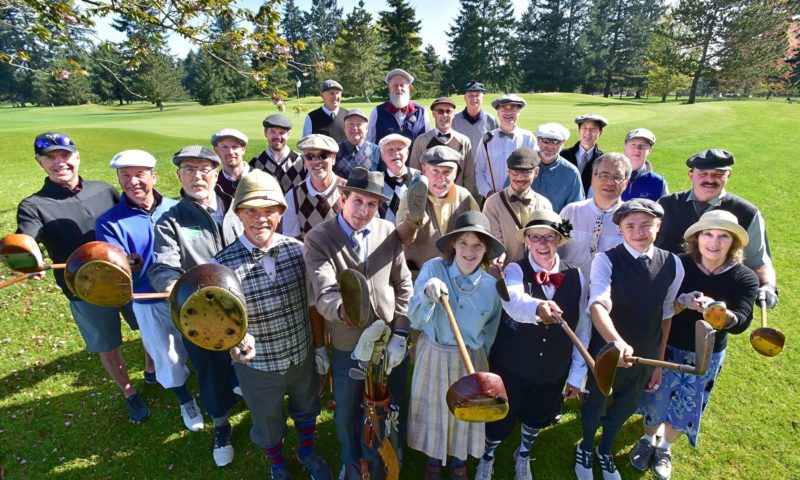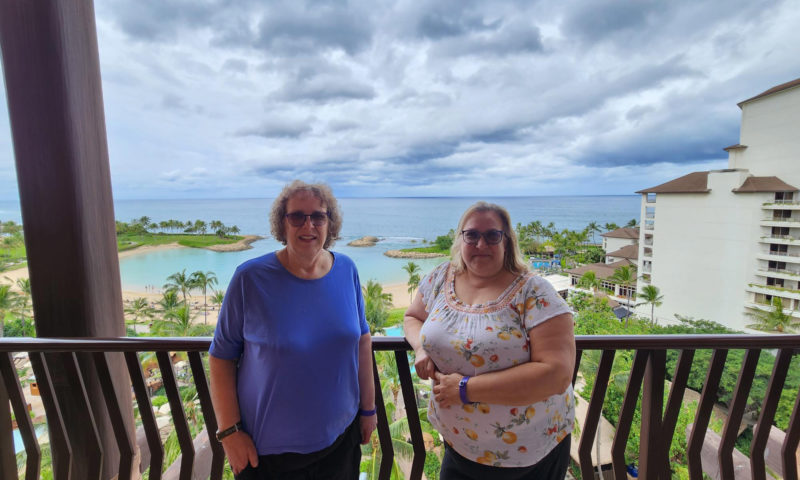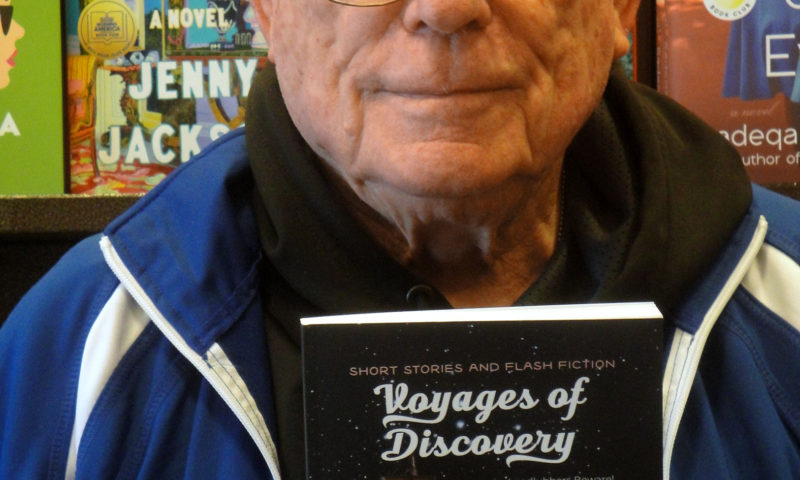The hickory crowd
Say hello (and maybe fore!) to some folks who not only talk about the old days but also keep them going.
They’re the 200 or so members of Northwest Hickory Players, an association of golfers that formed in 2014 to enjoy and promote playing golf the old-fashioned way with some of the original equipment–hickory era, pre-1935 clubs.
The wood-shafted clubs, some more than 100 years old, are the favorite way to play for linksters such as John Quickstad of Sammamish. His clubs from 1895 because are “beautiful” and take him back to some of the ancient origins of the game in Scotland in 1851.
“I describe it as getting to play with my antiques,” he said.
The men and women in the hickory crowd play socially and competitively. They have outings to golf courses throughout the Pacific Northwest (Washington, Oregon, and British Columbia is their main focus), organize club swaps and sales, and welcome newcomers to the wood-shaft world. There are no membership costs or other obligations. On the competition side, Northwest Hickory Players has an annual state tournament (the 2023 event was staged May 21-22 in Walla Walla at Veterans Memorial Golf Course and Wine Valley Golf Course) and helped host the first two U.S. Hickory Opens on the West Coast–at Pebble Beach Resorts (Del Monte Golf Course) in California in 2017 and at Gearhart Golf Links near Seaside, Ore. in 2021. Andrew Von Lossow, a Northwest Hickory member, won at Gearhart, which itself is a blast from golf’s past. The links-style course opened in 1892 and was designed by Robert Livingston, a native of Scotland.
Northwest Hickory Players is affiliated with the international Society of Hickory Golfers (SoHG), which has about 3,000 members worldwide. One of them, an honorary lifetime member, is a Washingtonian–Jeffery Olsen of Shoreline.
Along with the U.S., countries with their own national associations include Canada, Australia, New Zealand, Japan, South Africa, and numerous European nations such as Scotland and Ireland
Credit for the organized modern pursuits of hickory-style golf in the United States generally is given to so-called “hickory hacker” events that were part of annual meetings of the Golf Collectors Society. GCS was founded in 1970 by Joe Murdoch and Bob Kuntz to share their passion for golf history and the game’s collectibles and memorabilia. Only a few dozen people were involved at first, but as the idea caught on, GCS held more meetings, some collectors and traders of wood-shafted clubs wanted to try playing with them. The rest is history.
Among the Northwest Hickory contingent, “there are a few of us that also work on the clubs–resetting heads, replacing or repairing shafts, installing grips,” Quickstad said. “Those skills are also part of the hickory golf experience that our group and the Society of Hickory Golfers are keeping alive and hopefully passing on to others. Just in case you were wondering how we keep clubs that are 90 to 140 years old in playing condition.”
Clubs aren’t all that make hickory golfers easy to spot on a course. They also use old-style balls and wear knickers and other period clothing fancied by golfers of yore. It is, they’ll tell you, more fun than a barrel of birdies.
Here’s how Quickstad and another Northwest Hickory enthusiast Martin Pool, of Kenmore, described it in a Q-and-A with Senior Scene:
SS: How did you get involved in hickory golf? Are you a student of golf, and/or a longtime player?
Quickstad: “I’m a long time player. I remember my maternal grandfather helping me with my game in junior high school. I then played on my high school golf team. I was intrigued by hickory golf clubs and had one from my paternal grandfather that I had tried playing with, but it had a cracked shaft and I didn’t know how to fix it at the time, so the club sat in a corner for many years. Then about 2011 I inherited my maternal grandfather’s hickory clubs. In 2012 I started looking around for hickory clubs like my grandfather’s set on the Internet and found the Society of Hickory Golfers (SOHG) website. I sent an e-mail to the SOHG contact asking about a contact in the Seattle area. I received back Rob Ahlschwede’s e-mail address and then started exchanging e-mails with him for help with building a play set. The following year, Rob let me know that a group of local hickory players were going to play at West Seattle Golf Course. By that time I’d assembled my play set, so I went to the event, played, and was hooked.”
Pool: “I’ve been playing golf for about 50 years. When I was in college, I worked in archives and became interested in history. History and golf naturally evolved into playing with hickory clubs, which I’ve been doing for the past 25 years. I also enjoy researching and writing golf history.”
SS: Do you prefer playing with wood-shafted clubs? How would you describe the difference between them and modern equipment, both in performance and just pure fun?
Quickstad: “I do prefer playing with hickory clubs, mostly because they’re beautiful to look at and I’m playing them for the unique experience they provide. I really like playing with my clubs from 1895 with gutta percha golf balls. The clubs are all handmade and really a form of Scottish folk art. I describe it as getting to play with my antiques. That’s only in hickory golf events or when a group of us go out to play a fun round. I play modern clubs in non-hickory events or with family or friends. In my experience, I find there isn’t much difference between hickory clubs and modern clubs, other than I can hit the fall farther with modern clubs. Putting and chipping are exactly the same.”
Pool: “I play both hickories and moderns — about 50-50. Many of our players play hickories exclusively. I marvel at how hickory clubs have withstood the test of time and that we can still play with them a hundred years later. The ball doesn’t go as far, about 90 percent of the distance with modern clubs, but that’s still remarkable for 100-year-old clubs. It’s true that hickory clubs are, as they say, “less forgiving” than modern clubs, but we joke that if you’re looking for forgiveness, then you should go to church. There is no greater fun in golf than hitting a pure shot with hickories and making birdies.”
SS: Does it feel like stepping back in time when you’re playing with others who are all dressed and equipped the way the game was played in the hickory era, especially in tournaments?
Quickstad: “I thought that might be the case when I first started. But the more I played, the more I realized what Rob Ahlschwede says is really true: It’s just golf. What that means is that the golf experience transcends time. So I don’t feel like I went back in time, I feel I’m just part of a shared experience that has lasted for hundreds of years. In the case of my clubs from the 1890s, I’m playing with the same clubs that someone enjoyed almost 130 years ago. It’s the clubs and courses that really link us to that shared experience”
Pool: “Absolutely, I feel like a time traveler when I’m dressed in period clothes and playing with original clubs. If you’re a student of history, the best way to learn it is by actually experiencing it. With golf, we’re fortunate that we can do that using authentic equipment. This is especially true when we play hickory-era courses such as Tacoma Country Club and Meadow Park (in Tacoma), which were built when hickory clubs were used.”


